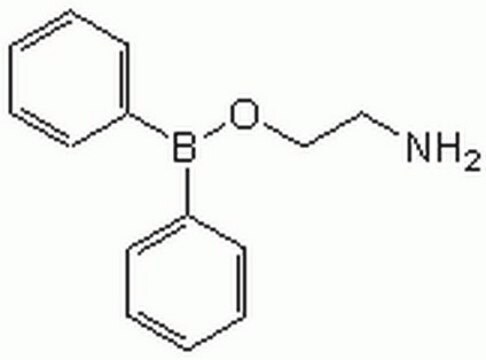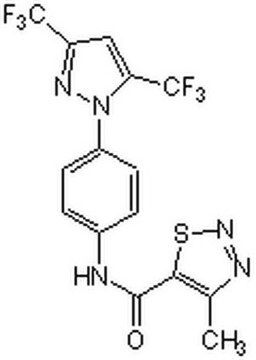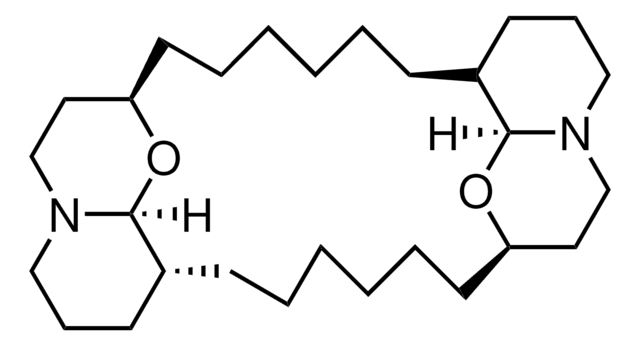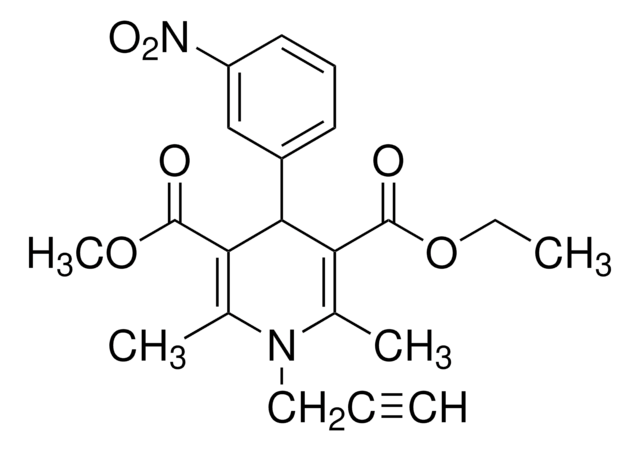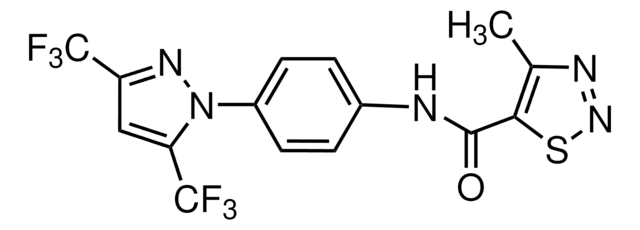Wichtige Dokumente
SML1949
Synta66
≥98% (HPLC)
Synonym(e):
4-Pyridinecarboxamide, N-(2′,5′-dimethoxy[1,1′-biphenyl]-4-yl)-3-fluoro-, GSK1349571A, N-(2′,5′-Dimethoxy[1,1′-biphenyl]-4-yl)-3-fluoro-4-pyridinecarboxamide, S66, Synta 66, Synta-66
About This Item
Empfohlene Produkte
Qualitätsniveau
Assay
≥98% (HPLC)
Form
powder
Farbe
white to beige
Löslichkeit
DMSO: 20 mg/mL, clear
Lagertemp.
2-8°C
SMILES String
O=C(NC1=CC=C(C2=C(OC)C=CC(OC)=C2)C=C1)C3=CC=NC=C3F
InChIKey
GFEIWXNLDKUWIK-UHFFFAOYSA-N
Anwendung
- as a Ca2+ release-activated calcium (CRAC) channel inhibitor to study its effects on ORAI isoforms
- as an ORAI1 blocker to study its effects on the entry of Ca2+ in chronic lymphocytic leukemia (CLL) B cells
- as a CRAC blocker to study its effects on the influx of Ca2+ by store-operated Ca2+ entry (SOCE) in enamel cells
Biochem./physiol. Wirkung
Lagerklassenschlüssel
11 - Combustible Solids
WGK
WGK 3
Flammpunkt (°F)
Not applicable
Flammpunkt (°C)
Not applicable
Hier finden Sie alle aktuellen Versionen:
Analysenzertifikate (COA)
It looks like we've run into a problem, but you can still download Certificates of Analysis from our Dokumente section.
Wenn Sie Hilfe benötigen, wenden Sie sich bitte an Kundensupport
Besitzen Sie dieses Produkt bereits?
In der Dokumentenbibliothek finden Sie die Dokumentation zu den Produkten, die Sie kürzlich erworben haben.
Unser Team von Wissenschaftlern verfügt über Erfahrung in allen Forschungsbereichen einschließlich Life Science, Materialwissenschaften, chemischer Synthese, Chromatographie, Analytik und vielen mehr..
Setzen Sie sich mit dem technischen Dienst in Verbindung.